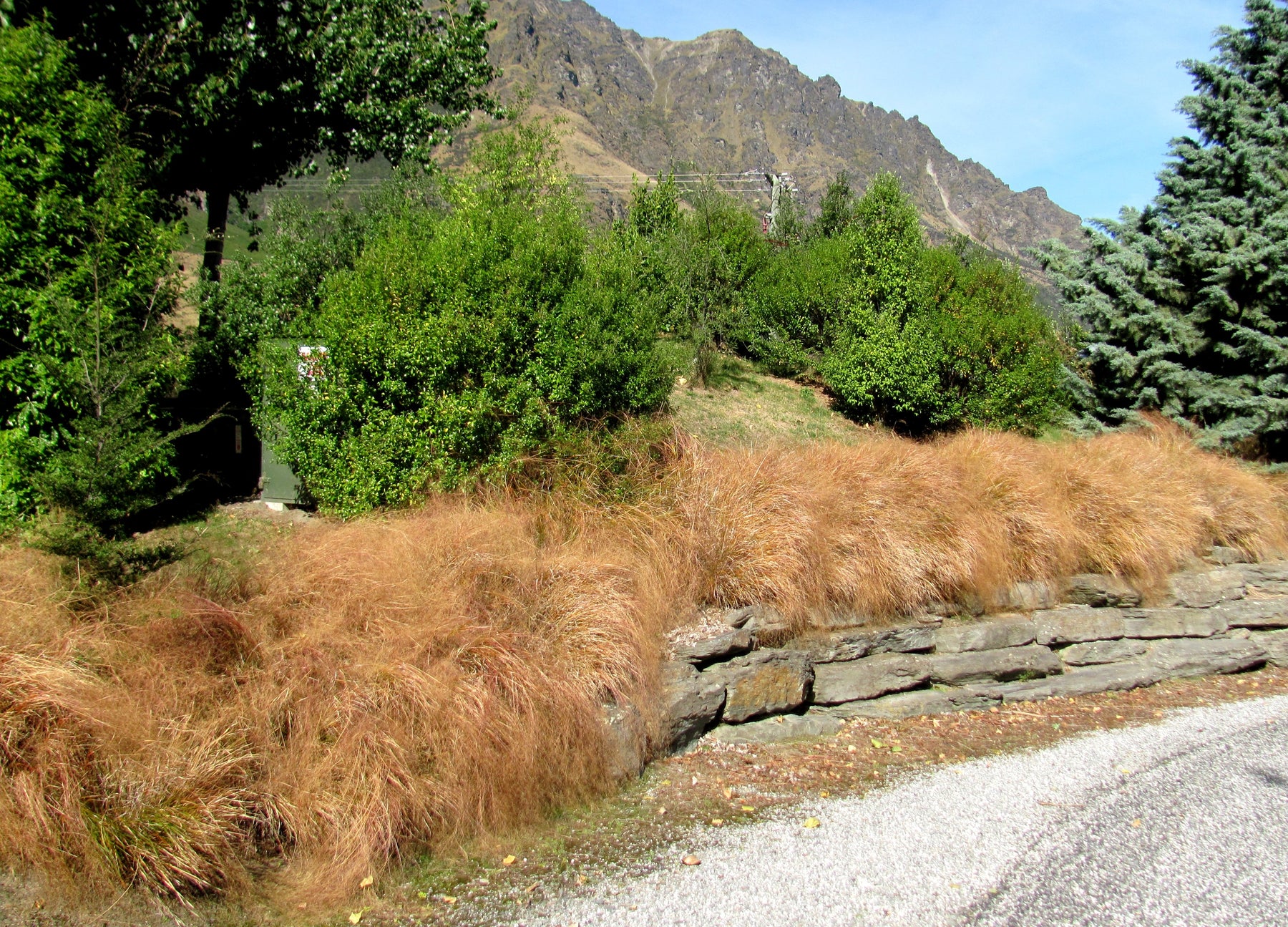Despatch from 5th Jan
Orders over $199
Despatch from 5th Jan
Orders over $199

Grasses are the silent champions of New Zealand's landscapes, providing essential structure, texture, and ecological function to both natural ecosystems and designed landscapes. From rugged coastlines to lush forests, Aotearoa is home to a diverse array of native grass species, each with its own unique attributes and ecological roles. Let's embark on a journey to discover seven native New Zealand grasses that epitomize the beauty and resilience of this remarkable botanical family.

Toetoe (Austroderia richardii spp.): Toetoe, with its majestic plumes swaying in the breeze, is a quintessential symbol of New Zealand's coastal landscapes. This genus includes three main species: Austroderia richardii, Austroderia fulvida and Austroderia toetoe. Toetoe grasses are valued for their ornamental beauty and adaptability to coastal conditions, making them popular choices for beachfront gardens, erosion control projects, and revegetation efforts virtually anywhere. (formerly known as Cortaderia sp.)

Poa (Poa spp.): The genus Poa encompasses a diverse group of grass species found across New Zealand's grasslands, alpine meadows, and forests. Poa cita, Poa foliosa, and Poa astonii are just a few examples of native Poa species that contribute to the ecological integrity and biodiversity of New Zealand's ecosystems. Known for their fine-textured foliage and graceful growth habit, Poa grasses provide food and habitat for native fauna while stabilizing soil and preventing erosion.

Tussock (Chionochloa spp.): Tussock grasses, belonging to the genus Chionochloa, are iconic components of New Zealand's alpine and subalpine landscapes, and are generally known as 'Snow Tussocks'.

These robust grasses form dense clumps or tussocks, providing habitat for native birds, insects, and lizards. Chionochloa flavicans, Chionochloa rubra, Chionochloa conspicua and Chionochloa rigida are among the most desirable snow tussock species, celebrated for their resilience, drought tolerance, and striking silhouettes against the sky.

Fescue (Festuca spp.): Fescue grasses, represented by species such as Festuca novae-zelandiae, Festuca astonii and Festuca coxii, are valued for their fine-textured foliage and adaptability to a range of habitats, from coastal cliffs to alpine meadows. Fescues play important roles in stabilizing soil, controlling erosion, and providing forage for native herbivores. Their tufted growth habit and subtle natural beauty make them versatile additions to both naturalistic landscapes and formal gardens.

Carex (Carex spp.): Although technically sedges, many species of Carex are commonly referred to as grasses due to their grass-like appearance. Carex species, such as Carex secta and Carex flagellifera, are widespread in wetlands, forests, and grasslands throughout New Zealand. These versatile plants serve as important components of riparian buffers, wetland restoration projects, and native gardens, providing habitat for wetland birds and stabilizing stream banks.

Wind Grass (Anemanthele lessoniana): Also known as Gossamer Grass or New Zealand Wind Grass, Anemanthele lessoniana is a graceful and versatile ornamental grass native to New Zealand. With its arching foliage and delicate seed heads that shimmer in the sunlight, Wind Grass adds movement, texture, and visual interest to gardens and landscapes. This hardy grass thrives in a range of conditions, from full sun to part shade, making it a popular choice for borders, mass plantings, and container gardens.

Red Tussock (Chionochloa rubra): Red Tussock, or 'Kakaho' in Māori, is a striking native grass prized for its vibrant red-brown foliage and architectural form. Endemic to New Zealand, this tussock grass is commonly found in alpine and subalpine regions, where it forms dense clumps up to 1.5 meters tall. Red Tussock is valued for its resilience to harsh alpine conditions, and natural splendour in the garden making it one of the most popular choices in modern landscapes and a valuable component of revegetation projects, erosion control efforts, and alpine gardens.

Native New Zealand grasses are not only botanical marvels but also essential components of the country's ecosystems, providing habitat, stabilizing soil, and contributing to the aesthetic beauty of the land. By celebrating and incorporating these grasses into our landscapes, we honor the unique heritage and ecological richness of Aotearoa while fostering biodiversity, resilience, and sustainability for generations to come. So, let these grasses dance in the breeze, whispering tales of resilience and beauty across the landscapes of New Zealand.
Leave a comment